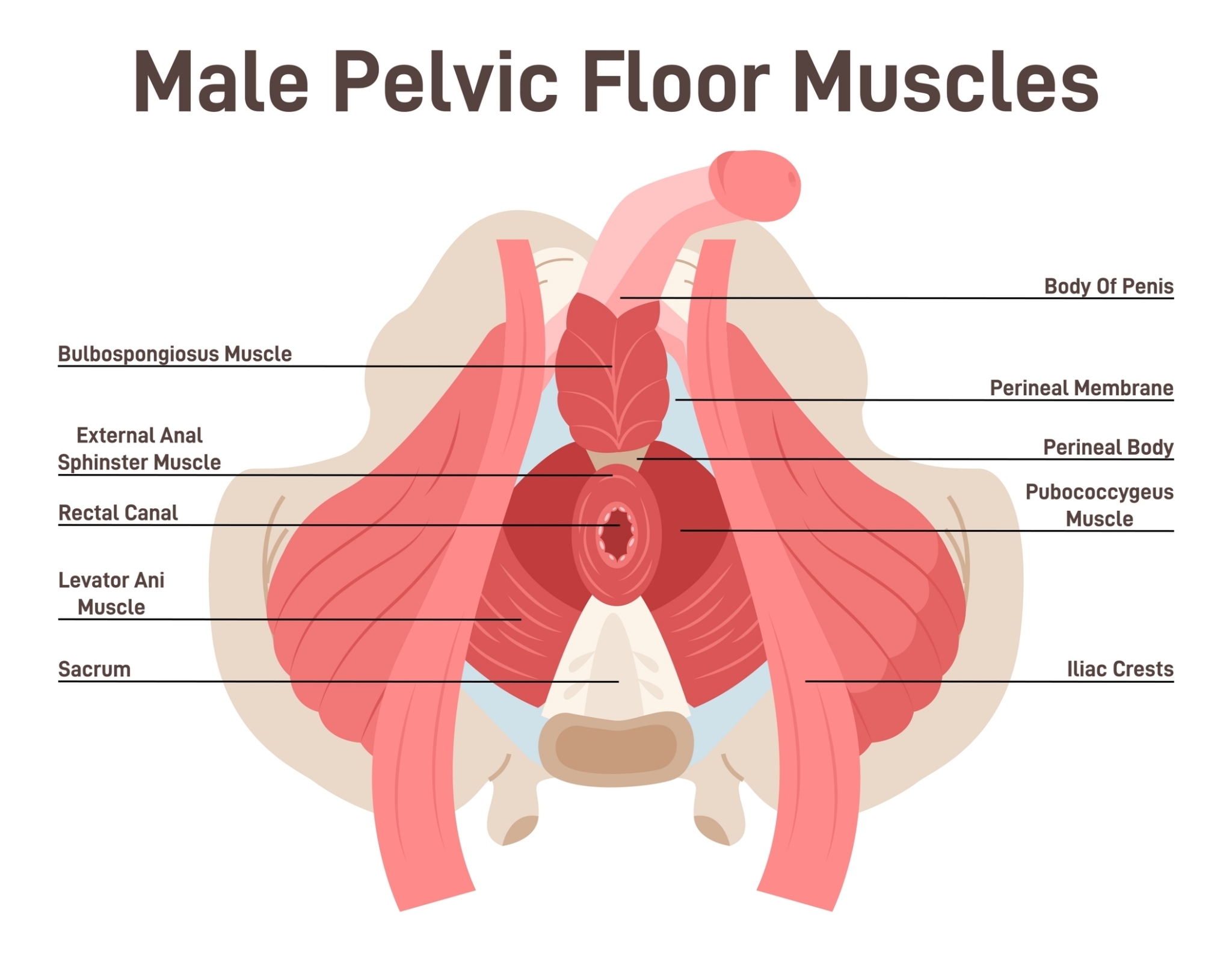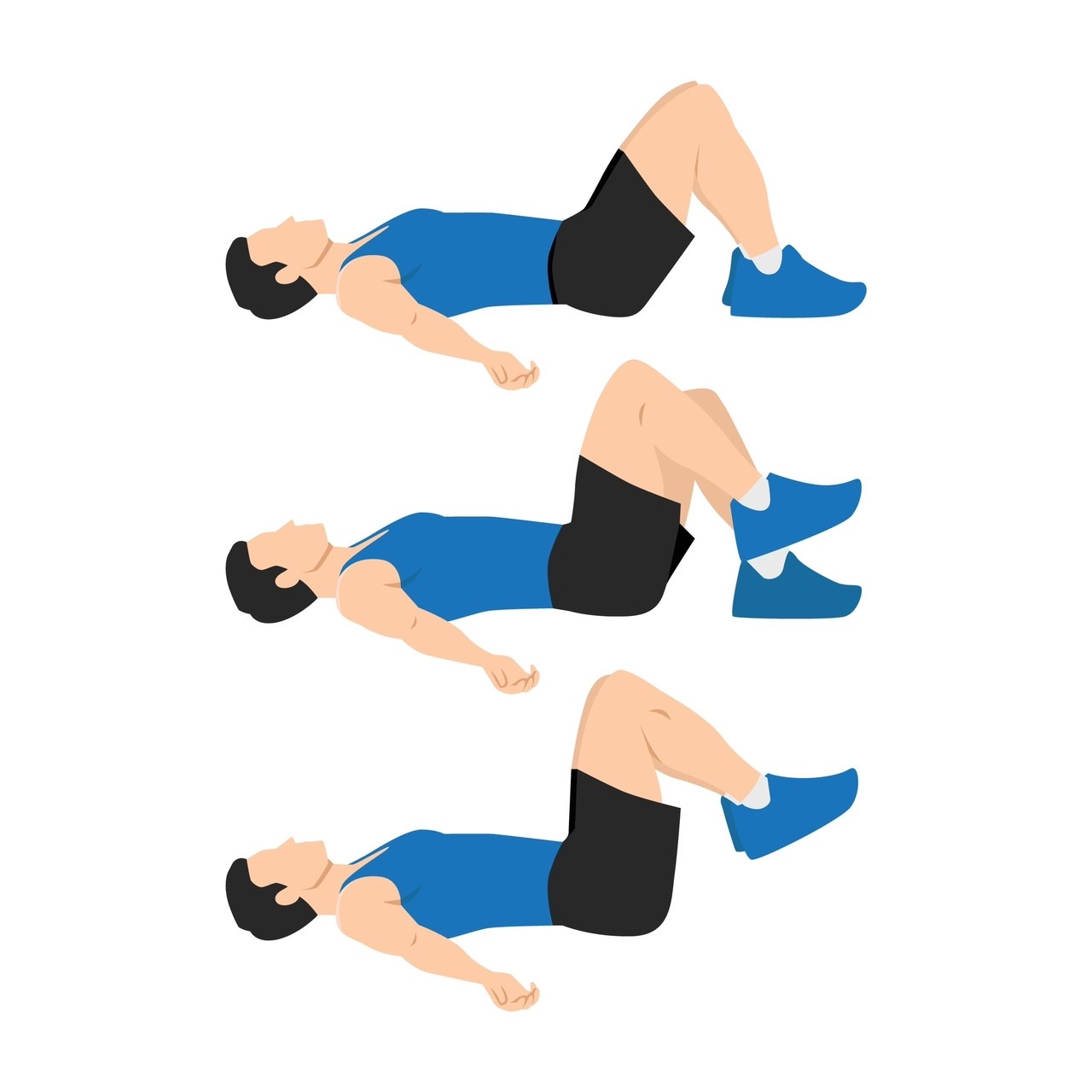Pelvic floor exercises, commonly known as Kegel exercises, are a series of muscle-strengthening exercises designed to target the pelvic floor muscles. The pelvic floor muscles are a group of muscles that support the organs in the pelvis, including the bladder, uterus, and rectum. Strengthening these muscles can improve bladder and bowel control, enhance sexual function, and prevent or alleviate issues such as urinary incontinence and pelvic organ prolapse.

picture 1 shows Male Pelvic Floor Muscles
Here's how to perform Kegel exercises:
1. Identify the Pelvic Floor Muscles: The first step is to locate the pelvic floor muscles. One way to do this is by stopping the flow of urine midstream while urinating. The muscles used to stop the flow of urine are the pelvic floor muscles.
2. Get into a Comfortable Position: You can perform Kegel exercises in any position, such as lying down, sitting, or standing. Choose a position that feels comfortable and allows you to relax.
3. Contract the Pelvic Floor Muscles: Once you've identified the pelvic floor muscles, contract them by squeezing or lifting them upward and inward. Imagine that you are trying to stop the flow of urine or prevent passing gas. Be careful not to tighten the muscles in your abdomen, thighs, or buttocks.
4. Hold the Contraction: Hold the contraction for 3 to 5 seconds, or as long as you can comfortably maintain it without straining or holding your breath. Focus on feeling the muscles tighten and lift.
5. Relax the Muscles: After holding the contraction, release the pelvic floor muscles and allow them to relax completely. Rest for a few seconds between contractions.
6. Repeat: Aim to perform 10 to 15 repetitions of pelvic floor contractions in a row, gradually increasing the number of repetitions as your muscles become stronger. Try to incorporate Kegel exercises into your daily routine, such as while watching TV, sitting at your desk, or waiting in line.
It's important to perform Kegel exercises regularly to see results. Consistency is key to strengthening the pelvic floor muscles and improving bladder control, sexual function, and overall pelvic health. If you're unsure whether you're performing Kegel exercises correctly or have difficulty locating the pelvic floor muscles, consider consulting with a healthcare provider or pelvic floor physical therapist for guidance and personalized instruction.

Picture 2 shows Pelvic Floor Exercises (Kegels)

